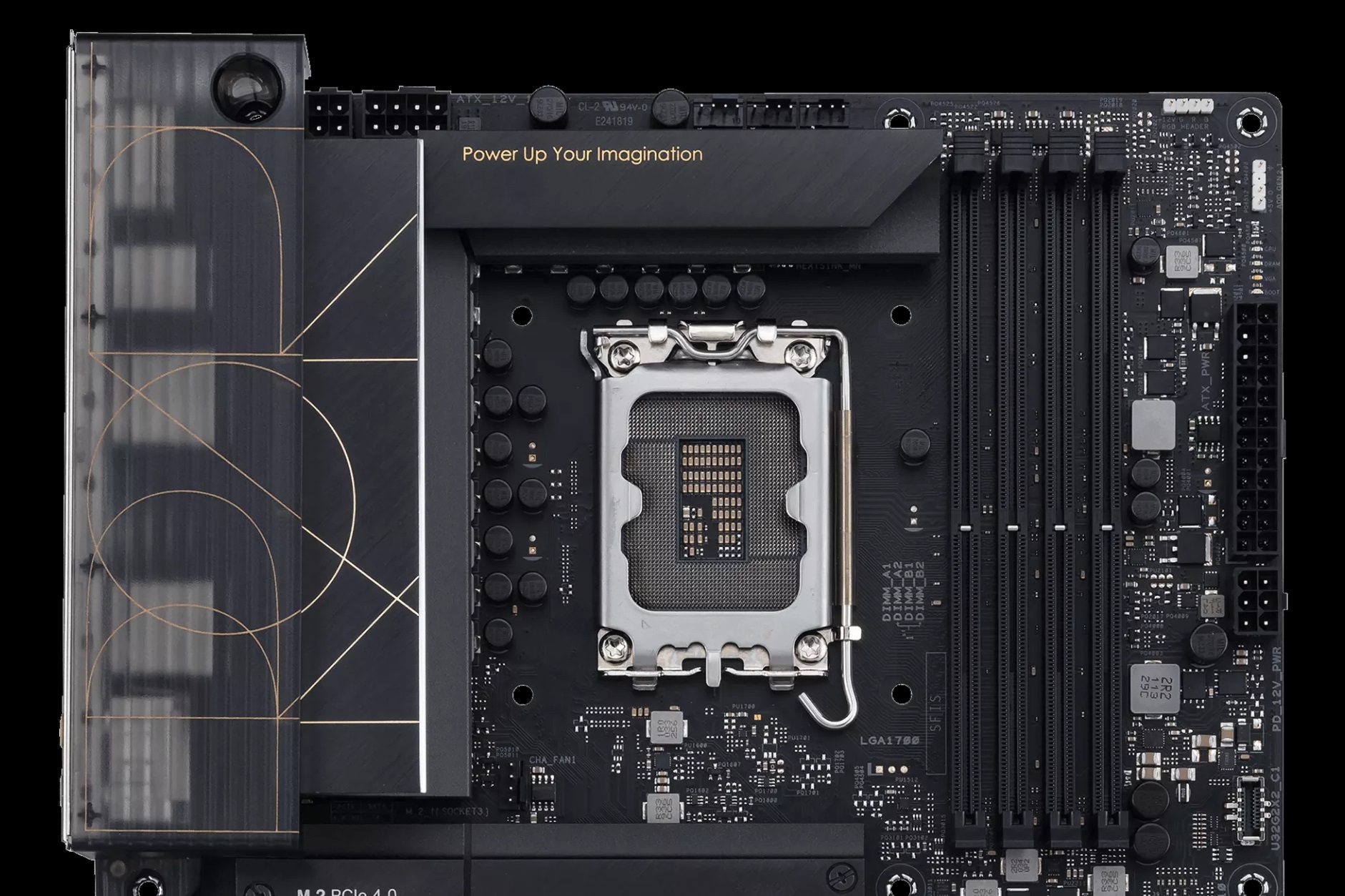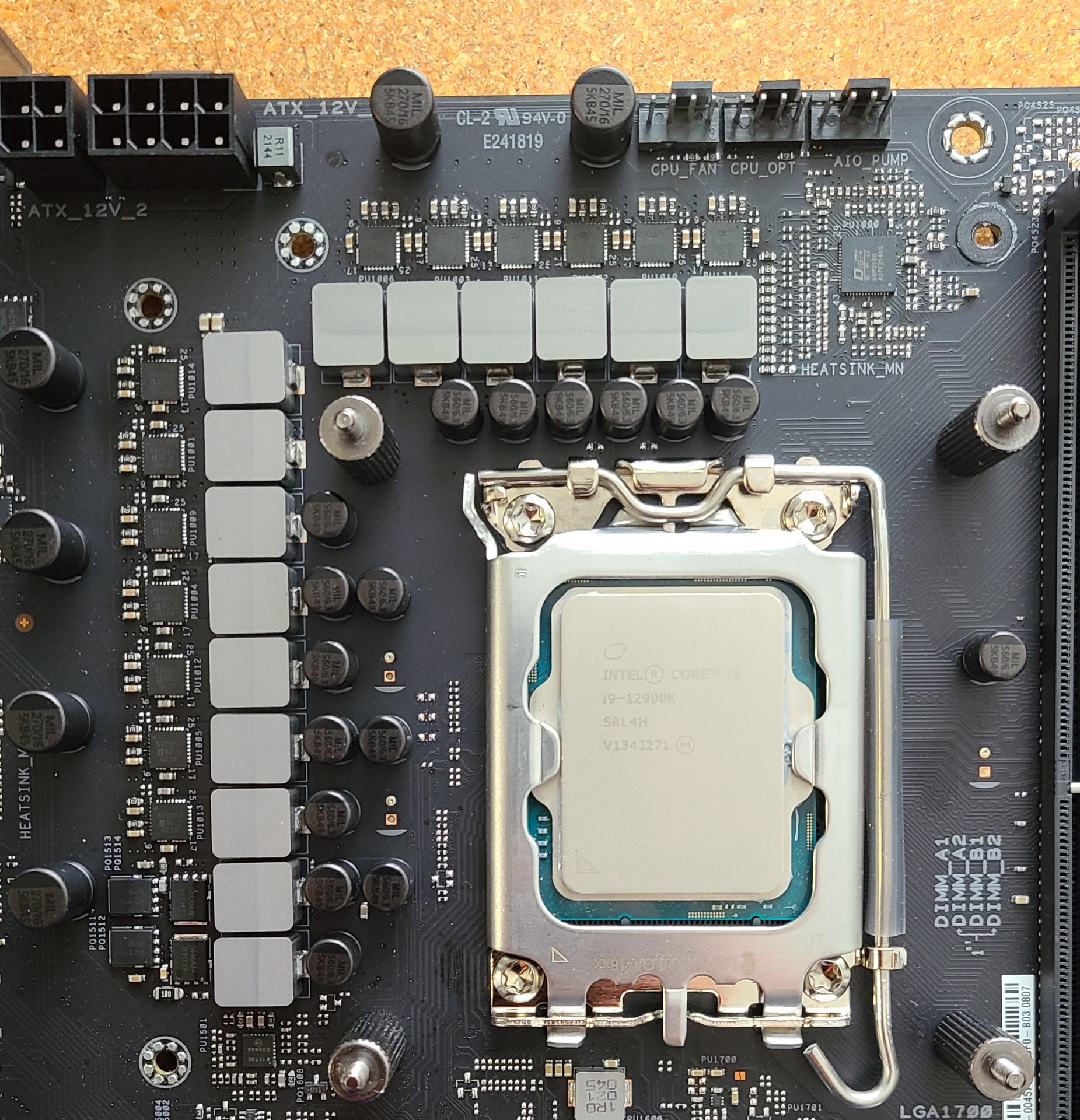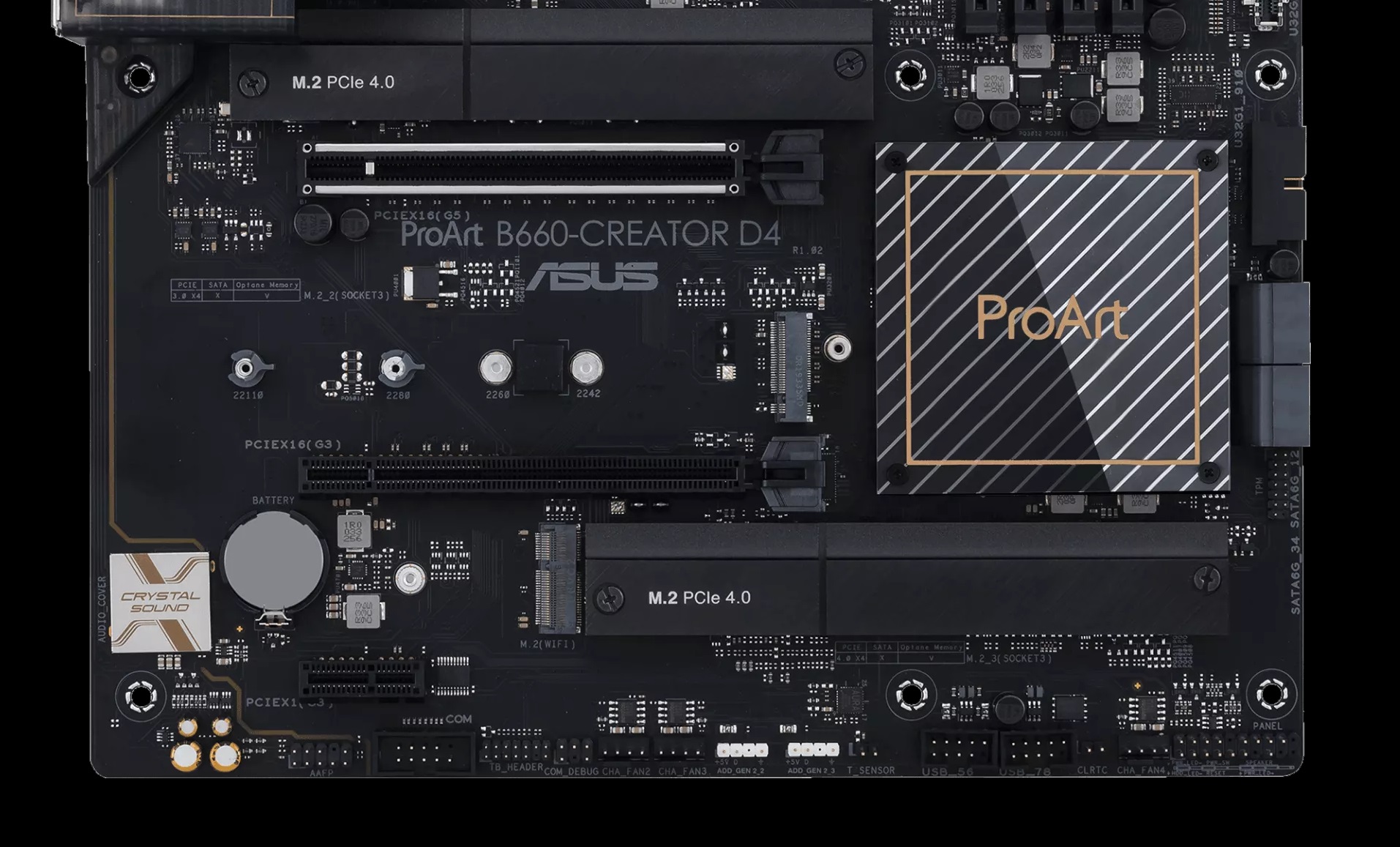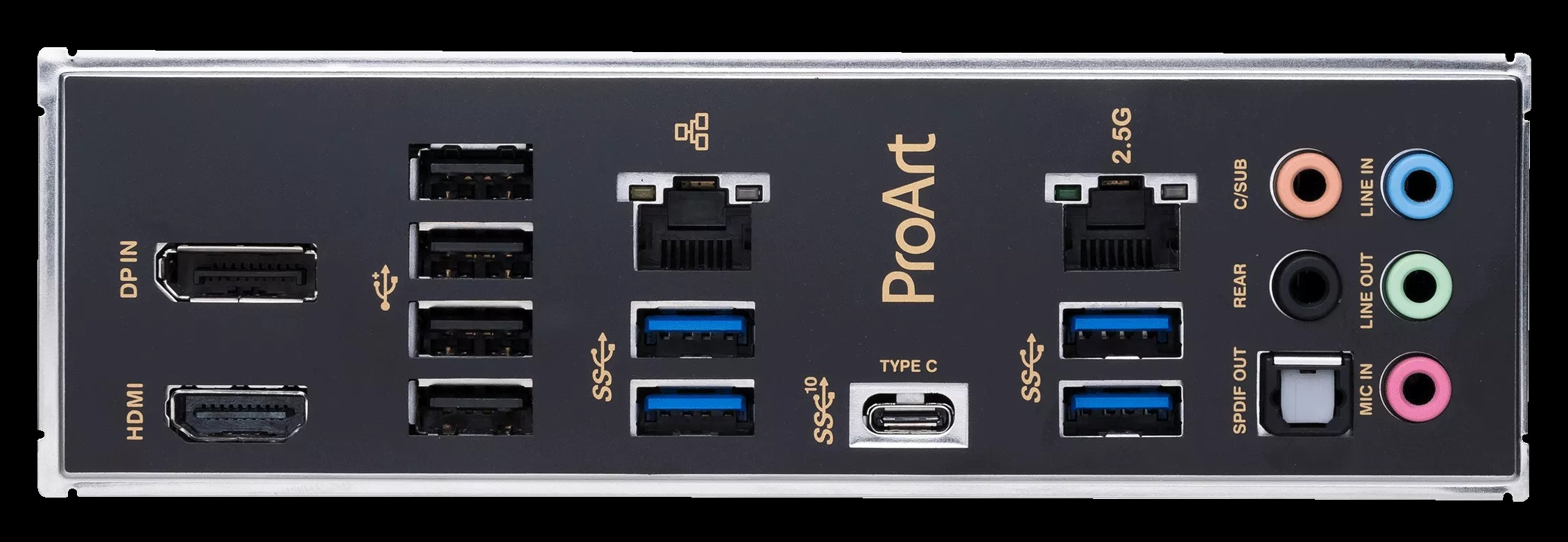When you’re a artistic skilled seeking to construct your personal Alder Lake PC and never break the financial institution doing so, the Asus ProArt B660-Creator D4 is right here to fulfill your wants. Priced beneath $200, the board provides knowledgeable look (no RGBs!) and the connectivity you’d count on for a budget-minded creator board. You get three M.2 sockets, a Thunderbolt header assist, twin ethernet ports and even USB-C DisplayPort for connecting a monitor. In all, this is among the least costly ATX ‘professional’ sequence boards accessible.
Different boards across the identical worth are simply as succesful, however are centered extra on common use and gaming, so that you lose a number of the flexibility the Professional board provides (DisplayPort USB-C and Thunderbolt header assist, for instance). Connectivity apart, the black-on-black board with gold accents/branding doesn’t stick out (no RGB LEDs) like numerous these gaming boards, however is meant for knowledgeable who could not need gowing bling out of the field within the first place.
Efficiency on the ProArt was common total, with some closely multi-threaded benchmarks operating slightly slower than most different DDR4-based motherboards. The Procyon Workplace benchmark was the intense level, and gaming efficiency was strong too. Whereas a good performer, at default settings, the processor throttles in closely multi-threaded conditions resulting from excessive temperatures. As a way to get probably the most out of your mighty Intel Core i9-12900K, you could have to make use of a voltage offset to stop the processor from throttling.
Beneath, we’ll dig into all the main points to see if this price range creator board earns a spot on our greatest motherboards record. However earlier than we do, right here’s an inventory of specs for the ProArt B660-Creator D4 from the Asus web site.
Specs: Asus ProArt B660-Creator D4
| Socket | LGA1700 |
| Chipset | B660 |
| Type Issue | ATX |
| Voltage Regulator | 13 Section (12x 50A MOSFETs for Vcore) |
| Video Ports | (1) HDMI (v2.1) |
| (1) DisplayPort (v1.4) Enter | |
| (1) USB Kind-C (DisplayPort output) | |
| USB Ports | (1) USB 3.2 Gen 2 Kind-C (10 Gbps) |
| (4) USB 3.2 Gen 1 (5 Gbps) | |
| (4) USB 2.0 (480 Mbps) | |
| Community Jacks | (1) 2.5 GbE |
| (1) GbE | |
| Audio Jacks | (5) Analog + SPDIF |
| Legacy Ports/Jacks | ✗ |
| Different Ports/Jack | ✗ |
| PCIe x16 | (1) v5.0 (x16) |
| (1) v3.0 (x4) | |
| PCIe x8 | ✗ |
| PCIe x4 | ✗ |
| PCIe x1 | (1) v3.0 (x1) |
| CrossFire/SLI | ✗ |
| DIMM Slots | (4) DDR4 5333+(OC), 128GB Capability |
| M.2 Sockets | (1) PCIe 4.0 x4 (64 Gbps) / PCIe (as much as 110mm) |
| (1) PCIe 3.0 x4 (32 Gbps) / PCIe + SATA (as much as 80mm) | |
| (1) PCIe 4.0 x4 (64 Gbps) / PCIe (as much as 110mm) | |
| U.2 Ports | ✗ |
| SATA Ports | (4) SATA3 6 Gbps (Helps RAID 0/1/5/10) |
| USB Headers | (1) USB v3.2 Gen 2×2, Kind-C (20 Gbps, 60W) |
| (1) USB v3.2 Gen 1 (5 Gbps) | |
| (2) USB v2.0 (480 Mbps) | |
| Fan/Pump Headers | (7) 4-Pin (CPU, CPU OPT, AIO Pump, Chassis followers) |
| RGB Headers | (3) aRGB (3-pin) |
| (1) AURA RGB (4-pin) | |
| Diagnostics Panel | EZ Debug LED |
| Inside Button/Swap | ✗ |
| SATA Controllers | ✗ |
| Ethernet Controller(s) | Realtek RTL8125BG (2.5 Gbps) |
| Intel I219-V (GbE) | |
| Wi-Fi / Bluetooth | ✗ |
| USB Controllers | ✗ |
| HD Audio Codec | Realtek ALC897 |
| DDL/DTS Join | ✗ / X |
| Guarantee | 3 Years |
Contained in the Field of the Asus ProArt B660-Creator D4
Contained in the field, Asus encloses a number of equipment together with the board. The contents are customary for a price range board and comes with the fundamentals to get you began, together with a driver disk, SATA cables, an M.2 screws, and extra. Beneath is a whole record of the included extras.
- DisplayPort cable
- (2) SATA cables
- (3) M.2 rubber packages
- (1) M.2 screw package deal
- Q-Connector
- Help DVD
- Person information
- Categorical Activation key card
Design of the B660-Creator D4
Designed for artistic professionals, the ProArt Collection, in response to Asus, focuses on reliability and suppleness in comparison with most different boards. The place you get an RGB gentle present on some boards, the ProArt sequence appears extra at what creatives want for his or her workflows. The all-black board sports activities the ProArt title artfully positioned on the big VRM heatsink and the plastic shroud protecting it. The chipset heatsink is a big sq. with further ProArt branding. The slots and sockets are additionally black, exterior of the first PCIe slot with its EMI safety (silver) surrounding it. The board received’t deliver consideration to itself, however for those who’d like so as to add RGBs, you actually can.

Beginning on the left aspect of the board, we see a plastic shroud with a translucent smoke end protecting the rear IO bits and a part of the VRM heatsink. Each VRM heatsinks include loads of mass and floor space to chill successfully. Simply above the left VRM financial institution are 4-pin and 8-pin EPS connectors to energy the processor.
Alongside the highest edge, within the center, are three (of seven) 4-pin fan headers (CPU_FAN/OPT, AIO_PUMP). All fan headers are Q-fan managed by the BIOS or Asus software program. The CPU headers mechanically detect if the hooked up gadget is PWM or DC managed; the remaining require a guide adjustment. All headers output as much as 1A/12W. Whereas that is good for followers and most AIOs, it is probably not sufficient for a high-powered pump in a customized water cooling loop. However once more, that’s not the sort of rig this board was designed for.
Off to the fitting of the LGA1700 socket are 4 unreinforced DRAM slots that lock on the high. Asus lists assist for DDR5-5333+(OC) and a capability of 128GB. We didn’t run into any points with both of the kits we used to check.
In the fitting nook are two (of 4) RGB headers. On this location is a 4-pin RGB and 3-pin ARGB headers with two extra ARGB headers alongside the underside. Persevering with down the fitting edge, we first run into the Q-LEDs that test key parts (CPU, DRAM, VGA, and Booting units) throughout the POST course of. Subsequent, a 24-pin ATX for board energy and a 6-pin PCIe connector for the supported PD 3.0/QC 4.0+ quick charging applied sciences (as much as 60W). Final is a entrance panel USB 3.2 Gen 2×2 (20 Gbps) Kind-C header.

Energy supply for the B660-Creator consists of 12 energy phases for Vcore. Energy will get despatched from the EPS connector(s) to the DIGI+ VRM chip (ASP2100) 10-channel controller and on to 12 50A Vishay Sic654 MOSFETs in a “teamed” configuration. The 600A accessible to the processor isn’t loads, nevertheless it dealt with our power-hungry i9-12900K at default speeds.

On the underside half of the board, beginning on the left, is the audio part that’s separated from the remainder of the board by a visual line operating as much as the rear IO space. Hidden beneath the shroud is a Realtek ALC897 codec together with a number of devoted audio capacitors. This isn’t the most recent or biggest, nevertheless it needs to be satisfactory for the creatives it’s marketed in the direction of (and most customers typically).
In the course of the board sit 4 M.2 sockets (three Key-M, one Key-E for a Wi-Fi adapter) and three PCIe slots. Beginning with the storage, the highest M.2 socket, M2_1, helps as much as 110mm PCIe 4.0 x4 (64 Gbps) drives and sources its bandwidth from the processor. M2_3, the heatsink-free center socket, has the identical specs/assist as M2_1, besides its lanes come from the chipset. The underside socket, M2_3, runs at PCIe 3.0 x4 (32 Gbps) speeds and in addition helps bigger 110mm modules. The Key-E socket helps CNVi-based Wi-Fi modules (not included).
Your major video card goes within the bolstered full-length PCIe 5.0 slot on high. The second full-length slot runs at PCIe 3.0 x4 speeds and the closed-end PCIe x1 slot runs at 3.0 x1, each sourcing their lanes from the chipset. There may be some lane sharing as PCIe x1 shares bandwidth with M2_2. PCIe x1 disables when M2_2 runs at PCIe x4 mode. Simply previous the chipset heatsink alongside the sting of the board is the 19-pin USB 3.2 Gen 1 (5 Gbps) entrance panel connector and 4 SATA ports. The SATA ports assist RAID0/1/5/10 modes.
Throughout the underside are a number of headers, together with USB ports and RGB, and even a 13-pin thunderbolt header for add-in playing cards. Beneath is a whole record, from left to proper:
- Entrance panel audio
- COM port
- 13-pin TB AIC header
- COM/debug header
- (2) Chassis fan headers
- (2) 3-pin ARGB headers
- 2–pin temperature sensor header
- (2) USB 2.0
- Clear CMOS header
- 4-pin Chassis Fan header
- Entrance panel

There rear IO plate on the B660-Creator comes pre-installed for easy set up. The IO plate has a black background and gold port labels that match the ProArt theme and are straightforward to learn. There are 9 USB ports right here: one USB 3.2 Gen 2 (10 Gbps) Kind-C, 4 USB 3.2 Gen 1 (5 Gbps) and 4 USB 2.0 (480 Mbps) ports. That needs to be loads for many customers. Video outputs include an HDMI v2.1 a, DisplayPort (v1.4) enter and a USB-C port that helps DisplayPort output. There are two Ethernet ports (2.5 GbE Realtek and 1 GbE Intel), whereas the audio stack consists of 5 analog plugs plus SPDIF audio stack. That is all fairly customary, exterior of the DisplayPort/USB-C show choices.
MORE: Greatest Motherboards
MORE: How To Select A Motherboard
MORE: All Motherboard Content material













